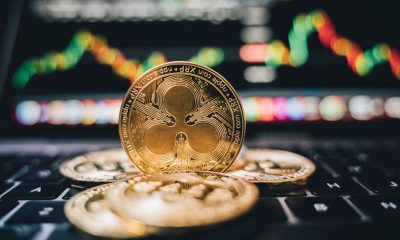Markets
The Fed is about to drop the MOAB on Wall Street
The economy won’t accelerate unless Trump is able to push through a massive tax cut very soon. But that doesn’t look likely in the least.

Trump hasn’t drained the swamp in Washington. Instead, he’s mucking it up with more swamp creatures from Goldman Sachs.
Wall Street and our central bank are in for a rude awakening very soon! The idea that the US economy is on stable footing and about to experience a surge in growth is ridiculous. Hence, the consensus that the Fed can normalize interest rates and its balance sheet is nothing short of a bad joke…and it’s on them.
For starters, the government’s fiscal deficit for the month of March came in at $176.2 billion, which means the deficit 6 months into fiscal 2017 is $526.9 billion and running 15% over last year. If not for the calendar timing of receipts and payments, our government’s deficit would be a year-to-date $564.0 billion or 23% above last year. In addition, there was an 18% decline in corporate income tax collection. We all know there was no corporate tax reform passed. So the credible conclusion must be reached that corporations are not growing their profits…they are actually shrinking.
The nation will now bump up against the $20 trillion debt ceiling on April 28th and is facing a possible government shutdown. This will happen to coincide with day 100 of Trump’s Presidency.
Unfortunately, Trump resembles more like a swamp creature as the days go on. Sadly, he becoming a flip-flopping carnival barker that duped the American public into believing he was actually going to cause an earthquake in Washington that shook the government back down to its constitutional foundation.
He no longer wants a strong dollar and an end to endless interest rate manipulations that has been robbing the middle class of its purchasing power for decades. Instead, he’s become a Yellen supporting, bubble blowing, XM bank funding, NATO backing, China-loving, card carrying member of the neocons in D.C.
But even though Trump now loves low-interest rates, the Fed has probably already tightened monetary policy enough to send stocks into a bear market and the already anemic US economy into recession. More proof of recession and deflation came from the economic data released on Good Friday: CPI down 0.3% in March and even the core rate fell 0.1%, Retail sales fell 0.2% in March and February sales were revised sharply lower to minus 0.3%, from previously reported up 0.1%.
Housing starts, Empire State Manufacturing and Industrial Production have all recently disappointed estimates. Housing starts fell a very steep 6.8 percent to a 1.215 million annualized rate. Empire State Manufacturing dropped from 16.4 in March, to just 5.2 in April and within Industrial Production, the manufacturing component shrank to minus 0.4 percent.
The sad truth is Trump isn’t draining the swamp…he’s flooding it with more of the same swamp creature from Goldman Sachs that have mucked up D.C. and the Fed for decades.
The Fed is about to drop the MOAB on Wall Street
The mystery here is why the Fed is raising rates when Q1 GDP growth is just 0.5%, there was under 100K net Non-Farm Payroll job growth and a negative reading on both the headline and core rate of consumer price inflation? Could it really be that Yellen realizes that savers must finally be rewarded for putting money in the bank? Perhaps she has come to the conclusion that asset bubbles must correct down to a level that can be supported by the free market. If only that were true. What is much more likely is that the clueless Fed has duped itself into believing it fixed the economy by its massive distortion of interest rates (100 months of less than 1% Fed Funds Rate), which has forced stock and home prices to record highs–and debt levels soaring to levels never before seen.
Wall Street and the Fed (which is a charter member of the swamp club) have been quick to explain this economic malaise away. The floundering GDP growth is being explained by a perennially weak first quarter. March NFP growth of just 98k is excused by the bad weather that occurred during the survey week. And negative CPI is being brushed aside by what the Fed hopes are just temporary factors. But unless the data turns around quickly, the Fed’s days of tightening monetary policy may have passed.
The economy won’t accelerate unless Trump is able to push through a massive tax cut very soon. But that doesn’t look likely in the least. Most importantly, keep in mind, the Fed has been tightening monetary policy since December 2013 when it began tapering QE. Now, after three rate hikes, the economy is teetering on outright contraction and deflation.
With geopolitical risk flashing bright red, half percent GDP growth, record high equity valuations and a delusional Fed that continues threatening interest rate normalization; the market’s reality check is surely imminent.
—
DISCLAIMER: This article expresses my own ideas and opinions. Any information I have shared are from sources that I believe to be reliable and accurate. I did not receive any financial compensation in writing this post, nor do I own any shares in any company I’ve mentioned. I encourage any reader to do their own diligent research first before making any investment decisions.

-

 Fintech2 weeks ago
Fintech2 weeks agoKraken Launches Krak: A Game-Changing Peer-to-Peer Crypto Payment App
-

 Crypto2 days ago
Crypto2 days agoThe Crypto Market Rally Signals Possible Breakout Amid Political Support and Cautious Retail Sentiment
-

 Impact Investing1 week ago
Impact Investing1 week agoEuropeans Urge Strong Climate Action Amid Rising Awareness and Support
-

 Crypto5 days ago
Crypto5 days agoXRP vs. Litecoin: The Race for the Next Crypto ETF Heats Up






















You must be logged in to post a comment Login